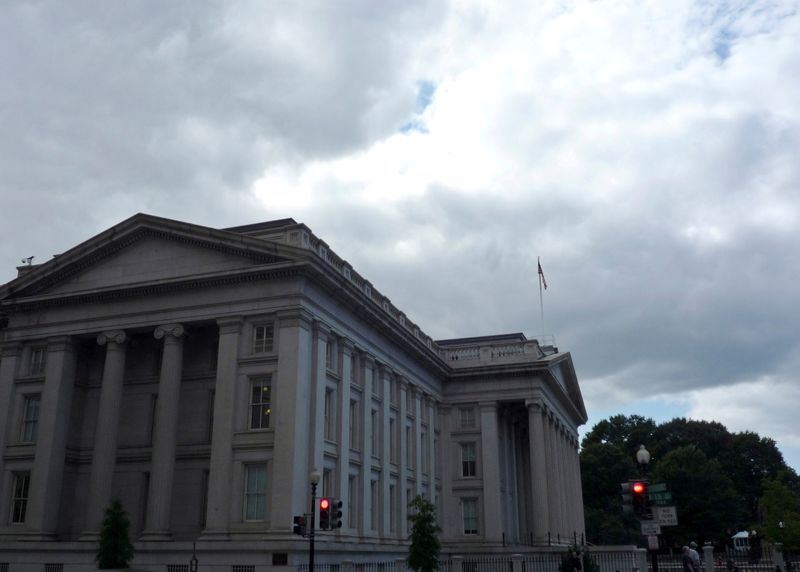By David Lawder
WASHINGTON (Reuters) -Inflation, monetary policy tightening and cyber attacks could heighten systemic risks to the U.S. financial system, along with the possible emergence of new COVID-19 variants, the U.S. Treasury’s Office of Financial Research said on Wednesday.
The office, created after the 2008-2009 financial crisis to study risks across the financial system, said in its annual report to Congress https://www.financialresearch.gov/annual-reports/files/OFR-Annual-Report-2021.pdf that climate risks were still difficult to assess and more of a medium- to long-term threat to financial stability.
The report finds that risks to U.S. financial stability remain in the medium range, but the financial system is far more resilient than it was when the COVID-19 pandemic began in 2020, largely because of government support for households and businesses that is fostering a recovery.
“This year’s economic recovery cannot lead to complacency,” Office of Financial Research (OFR) director Dino Falaschetti said in a statement. “Macroeconomic uncertainty will test the staying power of the economic rebound, and risks that have not traditionally been examined in terms of threats to financial stability are beginning to take shape.”
The OFR report said COVID-19 variants may continue to emerge, potentially threatening to derail the recovery, and a global increase in prices could persist for longer than anticipated, leading to a faster-than-expected increase in interest rates. This could prompt a repricing of risky assets and increases the risk of an economic slowdown, the report said.
The report said risks from cyber attacks had increased because of mounting economic costs associated with them.
Although the Treasury is pressing U.S. finiancial regulators to assess climate-related risks as they review rules, the report said the financial system risks of climate vulnerabilities were still difficult to identify, assess and forecast.
“Assessing the risk to financial stability posed by climate change is complicated by the medium- to long-term nature of the threat. At the same time, markets tend to focus on more immediate-to-intermediate threats,” the report said.
(Reporting by David Lawder, editing by Timothy Heritage)






















